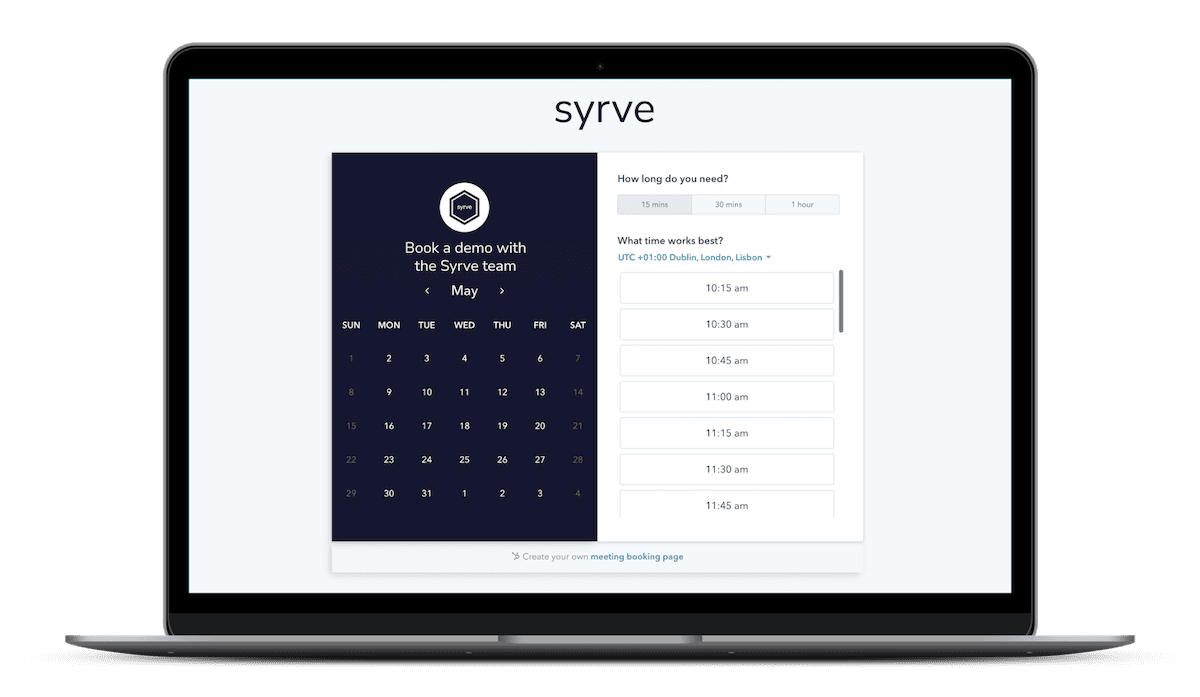In the restaurant sector, the encroachment of technology is being felt in almost every operational area. At front-of-house, self-service kiosks, contactless payments and QR code menus are changing the way teams work in terms of procedure and pace. It’s also the same behind the scenes - kitchen display systems, inventory management platforms, and advanced order processing tools are reshaping workflows, improving accuracy, and reducing manual effort.
Practically-speaking, implementing these technologies is often straightforward – especially with today’s simplified cloud-based platforms. But even with low footprint tech stacks, physical implementation is half the battle. Successful deployment depends heavily on team uptake and execution. In the restaurant vertical, this is easier said than done.
.jpg?width=636&height=424&name=9.05_Incontent2(1).jpg)
Why is Introducing Tech to Restaurant Staff a Challenge?
In a high-pressure industry defined by tight margins, minimal downtime, and deeply ingrained habits, introducing new technology such as POS software for restaurants or any food service operation, is going to be challenging.
The fast-paced nature of the industry leaves little time for learning. Where speed and precision are now front-and-centre, any system that slows things down, even briefly, will probably be rejected.
In addition to the demanding nature of the work, digital literacy tends to vary significantly among frontline workers who’ll often have varying levels of technical competency - what seems intuitive for a developer, may appear baffling for a server or cashier. Those that struggle will often revert to old methods resulting in data gaps and errors.
A culture of routine can also lead to operational friction when new tech is introduced. It’s very common for staff to favour outmoded, inefficient systems simply because they seem to ‘work well enough’. All of these hurdles conspire to make tech adoption slower and more fragmented.
Introducing Tech in the F&B Sector - Challenges
- Fast-paced environments leave little time for leaning
- Deeply ingrained processes lead to resistance
- Varying degrees of digital literacy lead to uneven adoption
- Lack of clear short-term value leads to disengagement
- Tight margins cause investment hesitancy when there’s no ROI
How to Introduce Technology to Restaurant Staff
When introducing new technology to restaurant staff, understand that not everybody is going to embrace it straight away. This is normal. Your goal shouldn't be to force change on everyone at the same time. Instead, you should try to identify champions who'll lead by example and encourage the rest of the team to follow suit. Before we get to that, you’ll need to communicate your changes the right way.
.jpg?width=636&height=424&name=9.05_Incontent1(1).jpg)
1. Communicate the ‘Why’, Not Just the ‘What’
If you’re introducing a new system, your staff need to know why you’re doing it, not just what the system does. You should explain the impact it’s going to have on them and what they can expect. Early communication is critical here. Announcing forthcoming changes well beforehand will allow your team to mentally prepare.
Avoid corporate or generalised announcements and instead align your communications directly to the recipient’s role. So, for a server, the introduction of a new restaurant management system could mean a faster service or streamlined payments. For a chef, it might translate to better food prep and order management.
By understanding precisely how a system will make their jobs easier, your team will be far more likely to engage more positively. However, it’s important to note some staff, particularly those with more experience, will have seen new initiatives come and go. To address scepticism, be honest and empathetic, addressing any concerns upfront. Your staff will feel more considered and informed about the process which means they’ll be more likely to engage, even if reluctant.
Communicate Early – Summary
- Communicate Early and Repeat the Message
- Explain the ‘Why’ as Well as the ‘What’
- Explain What Your Staff Can Expect
- Align Your Communications to Each Job Role
- Acknowledge and Address Scepticism With Empathy

2. Identify Your Champions
In every team, regardless of industry, there’s going to be a small number of staff members who will be highly receptive to change and have an influence over their colleagues. These are your champions. Get them onboard and your tech rollout is going to be much easier. Ignore them and implementation may become problematic. How to spot them?
At the earliest opportunity, identify staff members who are tech-savvy and/or have a positive attitude when it comes to change. They should also be respected by other team members, either formally or informally.
Once you’ve chosen your champions, invite them to test the new technology before the rest of the team. Get their feedback and involve them in any decisions about subsequent system tweaks and adjustments.
Then encourage them to highlight to staff the ways in which the new system will help improve their workflows and position them as first lines of support.
Identify and Position Your Champions - Summary
- Identify Influential Tech-Savvy Staff
- Pay Close Attention to their Feedback
- Position Them as System Champions
- Involve Your Champions in Decisions About System Adjustments
- Encourage Them to Promote the New System to Colleagues
- Position Your Champions as a First Line of Support
.jpg?width=636&height=424&name=hand-on-training(1).jpg)
3. Provide Hands-on Training
Training is perhaps the most critical stage of all. And unfortunately, it’s where a lot of restaurant tech rollouts run into trouble. A common failing among operators is to inflict generic slideshows on their team that are often disconnected from the actual workflows being demonstrated.
Bear in mind that staff working in hospitality don’t usually want to be held captive to sit-down training. Generally more practical by nature, they tend to learn better by ‘doing’. Hands-on training is therefore essential.
Avoid one-size fits all sessions and instead create segmented training for specific roles. For example, front of house training should be aimed at servers and cashiers, with a focus on things like order and payment processing, table management and upselling. Back of house training should be focused on ticket handling, stock taking, kitchen management software and so on.
If you’re planning a phased roll-out, as we’ll discuss in the next point, focus your training on the specific feature that you’ll be deploying.
Sessions should be kept short and supported with video walkthroughs and cheat sheets for reinforcement. Shadowing should be put in place too with your champion or manager at hand to help if required.
Remember that practice builds confidence. So give your staff plenty of time to get used to the system, make mistakes and ask questions, preferably before operating the system during a live shift.
Providing Hands-On Training – Summary
- Avoid Generic Sit-Down Training Presentations
- Provide Live Hands-On Demos
- Create Segmented Role-Specific Sessions
- Keep Training Sessions Short
- Reinforce Learning

4. Roll the System Out
Product rollout is another delicate process that needs to be managed carefully. Trying to launch everything at once can increase stress and operational errors. To avoid overwhelming staff and/or causing mass operational disruption, a phased gradual approach is often recommended.
The only problem is that many of the latest systems are fully-integrated, so they require a hard cutover. In layman's terms this means a rapid and immediate transition from an old system to a new one. A phased rollout is therefore not going to be an option in many cases.
To ensure the process runs smoothly, rigorous preparation is required. In our present context, this means following the steps laid out in this article. All team members should have hands-on exposure to the platform, communication should be clear and expectations set at a very early stage.
Trial the system in a real world environment with a small group of early adopters, ideally during slower periods. Fewer guests means lower risk and less pressure - this makes for a much better learning environment. Should you run a chain restaurant, then consider piloting the system at one venue first in order to gauge staff engagement and system performance.
Additionally, you'll need to be proactive in gathering early feedback about potential friction points. This is where your designated champion is going to be of critical importance. Giving staff a clear go-to person for questions during rollout will ease concerns, maintain momentum and ensure the system becomes part of everyday routines. This leads neatly to the next stage.
Roll it Out in Stages – Summary
- Ensure Your Team is Ready
- Assign Your Champion
- Trial During Slow Periods
- Pilot at Single Venue
- Gather Feedback
- Move on to the Next Stage

5. Measure and Adjust
In an ideal scenario, you’d just deploy your new restaurant software or tech stack and have done with it. Unfortunately, easy implementations like this are rare. It’s not usually the case that you can implement a new system and then put your feet up. Implementation is about ongoing optimisation. More than likely there are going to be operational quirks that will need ironing out.
To track staff engagement, monitor staff log-ins and attendance logs. While this won’t provide the full picture, it’s a good starting point. With most of the latest systems, it’s also possible to monitor till shifts and sales transactions - this should provide further insights.
Pay close attention to any email or verbal communications you receive. These are obviously going to be early indicators of how well your staff are adapting. A spike in questions and queries is perfectly normal right after launch. It actually suggests that your team is actively engaging with the system. And more often than not, the questions will relate to basic issues such as login problems or missed steps. Expect these to decrease over time.
If they don’t, it may be that your training was inadequate or that the system hasn’t been configured properly. But also keep in mind that a sudden drop in reported 'issues' could mean that the system is being ignored.
To support the entire onboarding process, it’s really important to set up a feedback loop. Make use of pre and post shift meetings to see how things are going with your team. Talk to your champions as well. They’ll be able to tell you what others are saying privately about your system – be aware that not all team members will be comfortable about offering negative feedback.
In the days and weeks after launch, you may find that staff need further instruction on how to use the system. If necessary, revisit training as and where needed. It may become apparent that some team members are slower to adapt than others. So, pair them with more confident colleagues who understand the system better. Should a certain feature cause widespread confusion, disable it temporarily and retrain.
As well as identifying potential problems, celebrate what’s working. During your meetings, highlight areas of strength such as fewer order errors, faster table service or improved time-tracking efficiency. This is going to be very good for morale and should drive further engagement.
Measure and Adjust Summary – Summary
- Track Log-Ins and Attendance Logs
- Pay Close Attention to In-House Queries
- Set Up a Feedback Loop
- Retrain Where Necessary
- Pair Slow Adopters With More Confident Colleagues
Final Thoughts
Introducing new technology to staff isn’t just about the actual system. It’s also about the people. Successful deployment depends on clear communication, practical training sessions and consistent support. By following these steps, you won’t merely be implementing a new tech stack. You’ll be embedding a much better way of working.

.jpg)

